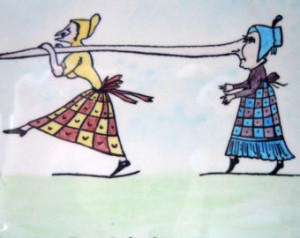 One of the more interesting forms of poetry is the limerick. Although no one seems to take credit for having been the created the limerick style of poetry, there have been many poets who have excelled at writing them. Some of the earliest known examples of the limerick were found back in the 1800s. In general, the limerick is recognized by its standard rhyme scheme (AABBA) and it’s often humorous and rather crude endings. Noted author, George Bernard Shaw, stated that it was considered a requirement that a limerick be on the edge of obscene. In fact, the purpose of the limerick was to somehow violate social norms or cultural taboo. Perhaps one of the best known publishers of limerick poems was Gershon Legman. He is recognized for having compiled a very extensive anthology of well over 1,700 of these compelling and amusing poems. They were originally compiled and published in France under the simple title of Limericks. Legman, who was an American born writer, also published these works in the United States. He also published a collection in American titled Love and Death; however, at the time, the US Postal Service consider this publication as vulgar and indecent, and refused to allow him to send it through the mail service.
One of the more interesting forms of poetry is the limerick. Although no one seems to take credit for having been the created the limerick style of poetry, there have been many poets who have excelled at writing them. Some of the earliest known examples of the limerick were found back in the 1800s. In general, the limerick is recognized by its standard rhyme scheme (AABBA) and it’s often humorous and rather crude endings. Noted author, George Bernard Shaw, stated that it was considered a requirement that a limerick be on the edge of obscene. In fact, the purpose of the limerick was to somehow violate social norms or cultural taboo. Perhaps one of the best known publishers of limerick poems was Gershon Legman. He is recognized for having compiled a very extensive anthology of well over 1,700 of these compelling and amusing poems. They were originally compiled and published in France under the simple title of Limericks. Legman, who was an American born writer, also published these works in the United States. He also published a collection in American titled Love and Death; however, at the time, the US Postal Service consider this publication as vulgar and indecent, and refused to allow him to send it through the mail service.
Untitled
by Captain Nicholl

Another individual who was instrumental in the popularization of the limerick style of poem is Edward Lear. He is responsible for the publication of The Book of Nonsense as well as other related volumes. Most limericks of the era were considered nonsense, and were written in a style that encouraged that description. Lear himself wrote over 200 limericks, most of which were composed in the ‘nonsense’ style. Another interesting aspect of the limerick was that it was usually accompanied by an equally absurd drawing or illustration. A common practice was to also make the final line, the conclusion, use some similar variation of the opening word or phrase. Here is an example of a limerick that describes the fun of the limerick style of poetry.
Limerick
by Anonymous

Another common practice among writers of the limerick was to play with names, especially those which were exotic sounding geographical locations. In fact, the limerick was used as an unofficial mnemonic device in the classroom. The limerick was also used mostly by educated men, with women being identified as either as victims in the scene, or even as villains. The more desired limericks were those which added a surprising twist to its ending, often developed along with the torturing of rhymes and wordplay. It was also common for the limerick to contain some sort of alliteration, internal rhyming, or assonance. Limericks have also been set to a variety of tunes, usually employing a jig time (6/8) which has a rather natural bouncing rhythm. This style of musical limerick has proven to be very popular, especiall among children, and they are often used in nursery rhymes. An example of that would be the well known nursery rhyme, Hickory Dickory Dock, whose author and origins are debated.
Hickory Dickory Dock
by Unknown



You must register to comment. Log in or Register.